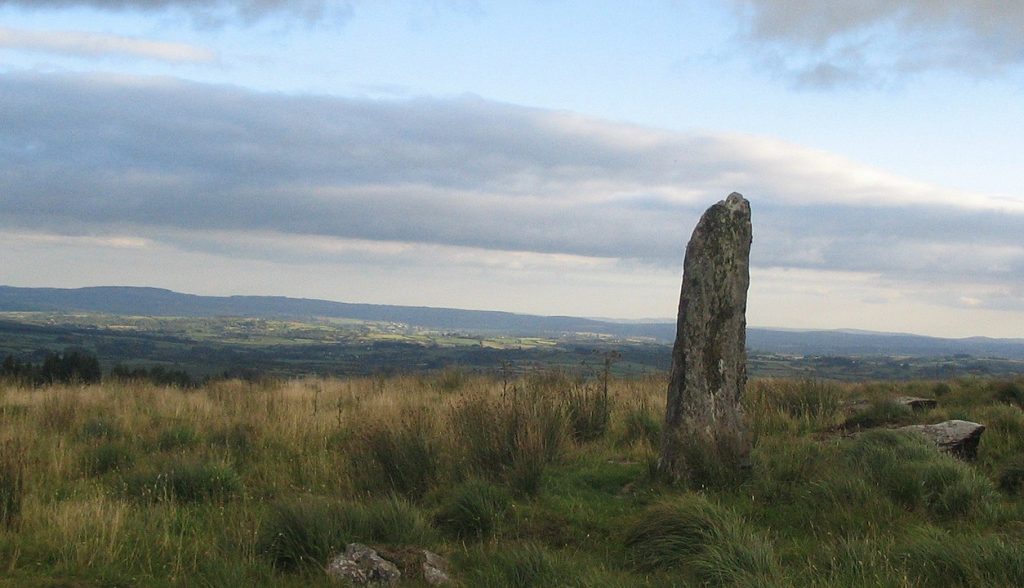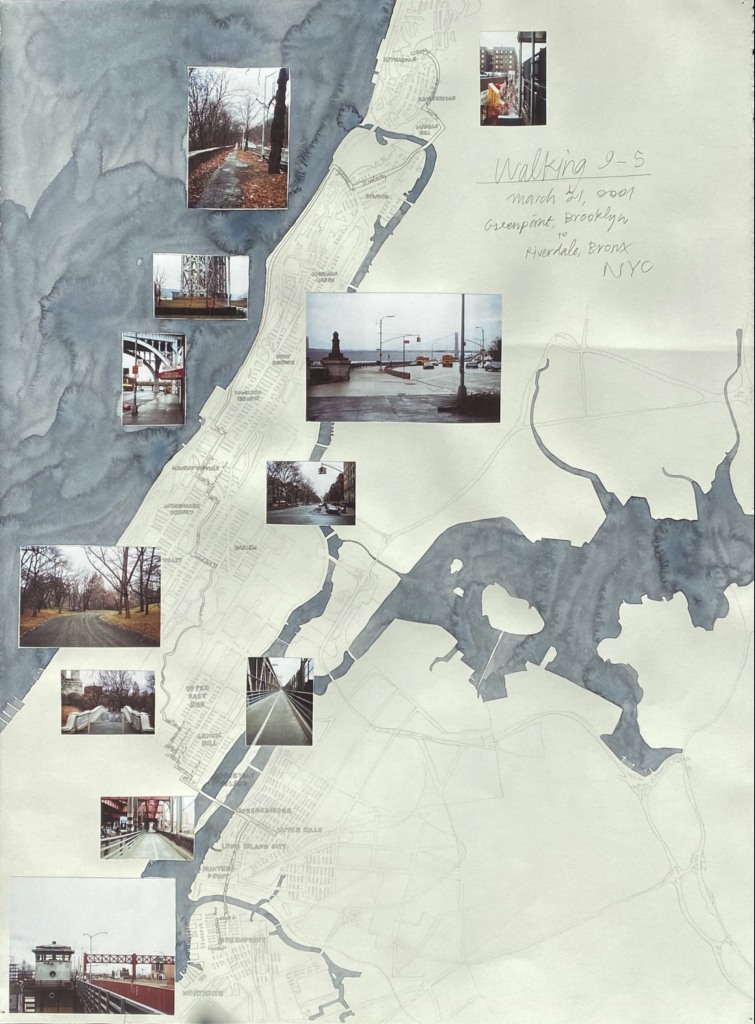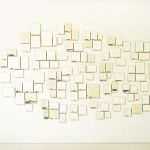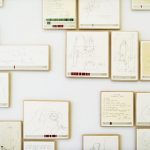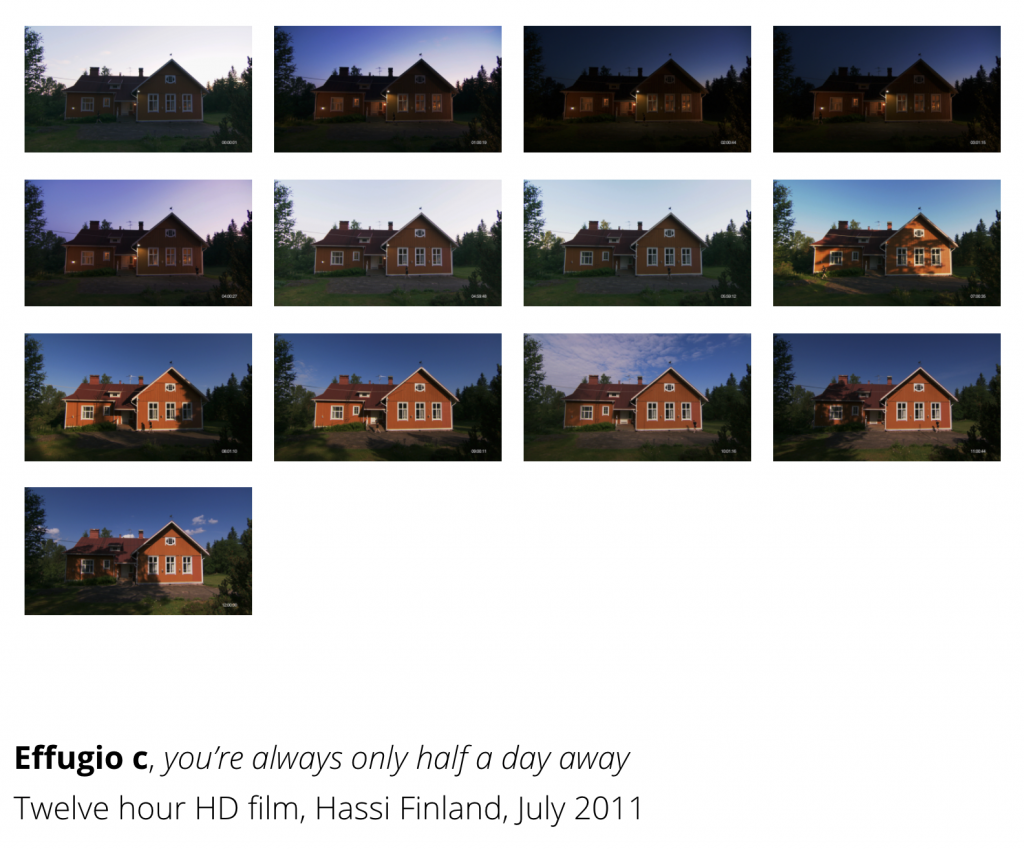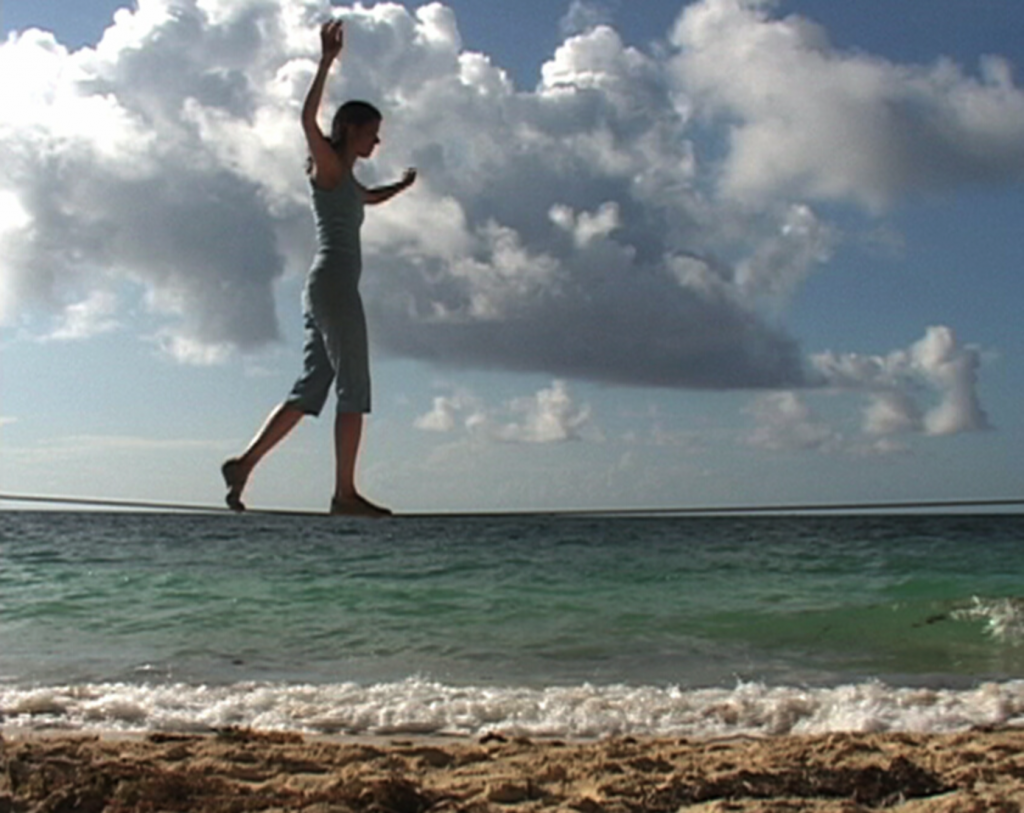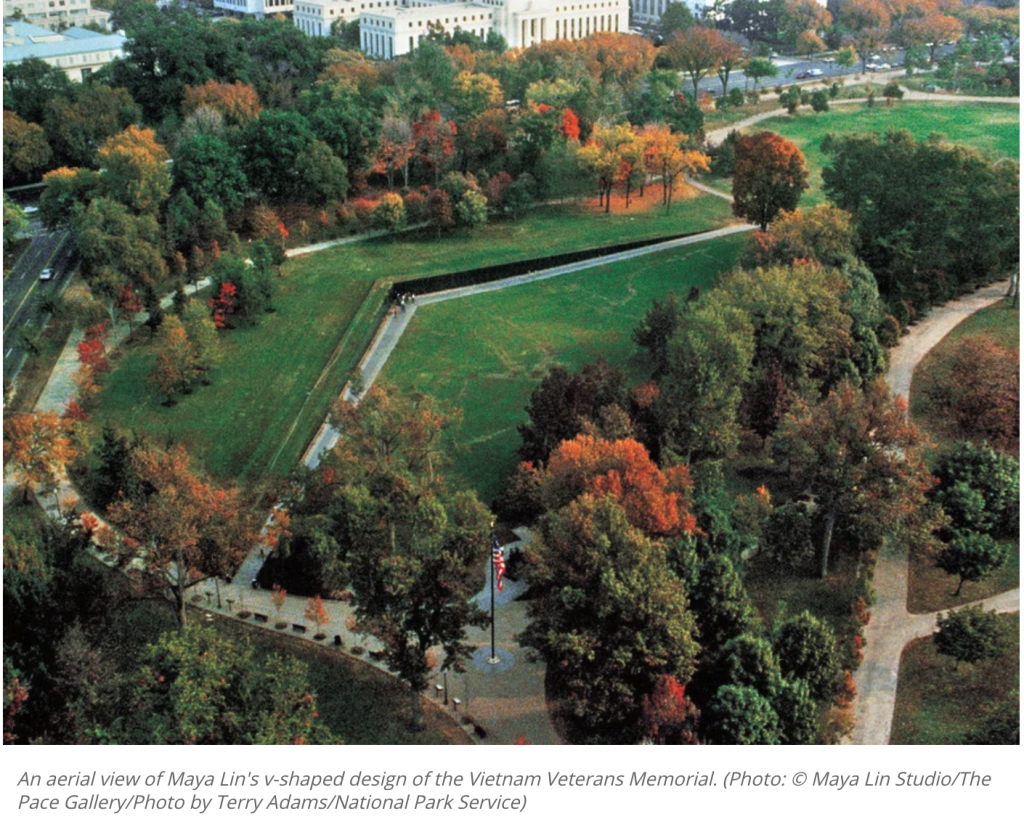[credit]
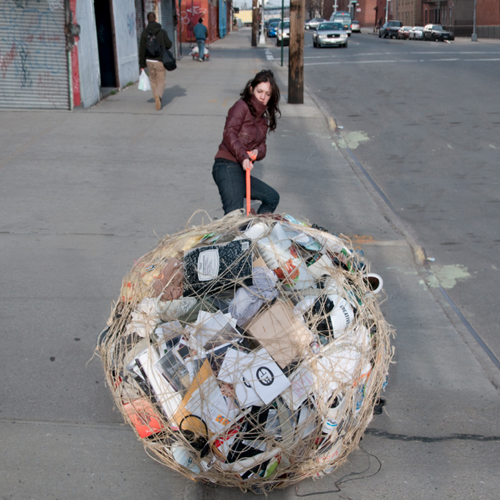
Mary Mattingly, Pull, 2013
“Based on philosopher Gaston Bachelard’s book Poetics of Space with a chapter by the same name, House and Universe describes duality and interdependency within local and nonlocal space. House and Universe is an allegorical series of photographs that combined living systems like floating geodesic capsules with bundles of personal objects I had collected and carried with me. When I was making this work in 2013, I had bundled almost everything in my possession into seven large boulder-like forms that could be rolled or pushed.
One photograph shows a place I lived in between a series of storms when the houses were covered in whatever scrap was available. A bundle sculpture is in front of the homes, symbolically connecting climate disasters with consumption.
That title alludes to the story of Sisyphus (the trickster who was tricked in the end) which stuck with me throughout the series, as I dragged these bundles from one place to another, across towns where I was invited to recreate performances, and back into and out of exhibitions and studio spaces.
Another image shows a naked body of a person in my life from behind, with a large boulder of things provocatively titled Life of Objects.
Own it.us was made at the same time: an online library that catalogs the things I bundled and illustrates the pathways of these objects, and how they came into my life. I’ve spent considerable time living in and within ecosystems or shelters I’ve co-built, some pictured in House and Universe, those experiences have asked me to reconsider my surroundings, to vision how collections can function as monuments to consumption, and how, as an inhabitant of NYC, I help make the collective monument called a landfill.
In absurd performances, I would pull the bundles through NYC, Really to emphasize the weight of these objects.
The sculptures’ wrappings are inextricably intertwined like cycles of production – through a chain of formal and informal exchanges, an object is mined, made, distributed, bought, exchanged, eventually thrown away, where it becomes something else. The photographs of these things echo the cobbled together things themselves: pieced together with images of disparate place, time, and space. Like time capsules, they function as obstructions and proposals. They block, interfere, and frame an encounter.”
